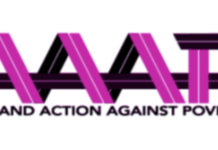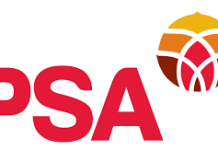Headline: The EnvironmentaLIST: The worst things the tuna industry does to our oceans

When what you do is hundreds of miles from civilization, it’s pretty easy to get away with some messed up stuff. The tuna industry in particular can reap the benefits of an “out of sight, out of mind” existence. Here are some of the worst fishing practices tuna companies execute in order to plop colorful cans of tuna on grocery story shelves across the world.
6. Fish aggregating devices

n illegal fish aggregation device (FAD) anchored in the waters of Palau’s Exclusive Economic Zone
Fish aggregating devices (aka FADs) are floating objects that tuna vessels cast in the open ocean. Small plants anchor themselves to the physical body of the FAD, small fish use it as a hiding place, and larger animals flock to it as a source of shade and as a fertile hunting ground. After a few weeks at sea, a FAD can develop an entire ecosystem around it, which the tuna boat can wipe out entirely when it returns and scoops the whole thing up in a seine net.
FADs also attract sharks, billfish and other animals — most notably juvenile yellowfin and bigeye tuna — that come swimming by wondering what all the fuss is about. Both of those species are in serious trouble, and cannot survive with FADs still in practice.
Trying to shop for sustainable canned tuna? Buy pole-and-line or FAD-free seined skipjack.
5. Longlines
This indiscriminate fishing method is one of the greatest killers of turtles (which get hooked nibbling on the bait, can’t return to the surface to breathe, and drown), albatross and other seabirds (which dive on the glinting hooks thinking they’re fish and are subsequently snagged), and other non-targeted animals. Longlines are just that — long lines set by fishing vessels that stretch from buoy to buoy across the open ocean, sometimes for multiple miles at a stretch. Every few yards, a long lead ending in a baited hook dangles from the main line. When the ship circles back to reel in the longline and assess its catch, it contains far more than albacore tuna.
Nearly one third of the total global catch of the albacore tuna fleet — thousands upon thousands of tons per year — is turtles, sharks, sea birds, and other casualties.

Blue shark caught on a longline
Tip: When shopping for “white” tuna, buy pole-and-line albacore.
4. Unregulated fishing in protected areas
Outside of the boundaries of a country’s exclusive economic zone (EEZ), which stretches 200 miles into the ocean beyond the shores of any given state, there exists a lawless, oceanic Wild West known as the high seas. When it comes to fishing, most anything goes as there are no universally acknowledged enforcement bodies that can serve to protect our common resources.
Tuna vessels regularly park just shy of this 200-mile line, inside what are often referred to as the “high seas pockets” — four areas of unregulated ocean that are fully encircled by the EEZs of any number of island states in the western and central Pacific that depend on tuna stocks for their economic livelihood. Tuna, of course, know nothing of international boundaries, and pass freely back and forth over these lines until they are netted up by a nearby predatory seiner.
Since these vessels are operating in what are technically high seas areas, they have no rules to follow — no quotas, no maximum limits, etc. — and they don’t have to pay dues or access fees to the countries that actually own and manage the resources. Activities like transshipping (transferring fish from one vessel to another to allow for longer fishing times and less resource expenditure) are common, which further reduces the abilities of these nearby states to manage their tuna stocks sustainably.
3. Tuna Ranching
Just like the kind of ranching on land, this practice done by bluefin tuna companies, captures juvenile top predator species (think carnivorous predators) and then fattens them up for a harvest. Bluefin tuna are a particularly endangered and fragile species. Not only do these operations contribute to a high amount of waste, those species are also taken out of their natural environment, threatening the health of an entire ecosystem that depends upon healthy, keystone species such as bluefin tuna.
2. Depleting vital resources from smaller countries
Countries like Kiribati and Tuvalu in the Pacific Island states have virtually no resources aside from tuna, and without international law and market support enabling them to collect a fair and honest living from it, the established international tuna barons — companies like Thai Union (which owns the well-known US brand Chicken of the Sea), Fong Chin Formosa and Dong Won — are able to pillage their waters as they please.
Practiced in several smaller Pacific countries, pole & line fishing, pictured below, contribute to the long-term sustainability and evolution of fish stock.

1. Overfishing
Tuna companies are simply taking too much. The bluefin tuna has suffered losses in the Pacific Ocean of 96 percent, and 90 percent of those fished are juvenile fish that haven’t reproduced yet. In addition to the bluefin tuna, 3/4 of the world’s fish stocks are being harvested faster than they can replenish. If these trends continue, global fisheries could collapse by 2050.
Orignially posted on the Greenpeace US blog
—





